This article summarizes the results of functional imaging of meditation cognitive processes conducted with the University of Tuebingen in 2007, 2008, 2009, 2010 and 2013 using fMRI (Functional Magnetic Resonance Imaging) equipment.
The results give a neuroscience view on a number of Buddhist concepts and insights.
Validation #1: Existence and location of the four aspects of wordless awareness
The four aspects of wordless awareness were shown to be located in the following areas of the brain.
Wordless awareness is knowing without words. It consists of:
- Ultimate Seeing: in occipital lobe
- Ultimate Hearing: in temporal lobe
- Ultimate Touch: in parietal lobe
Cognitive awareness is cognitive self-awareness. It consists of:
- Ultimate Cognition: in parietal lobe
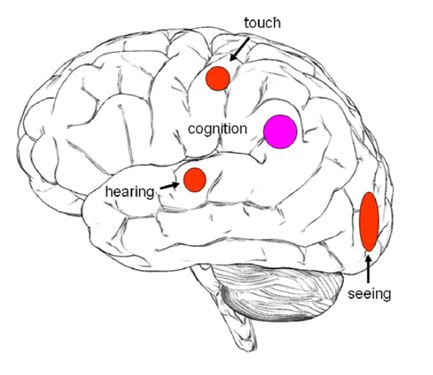
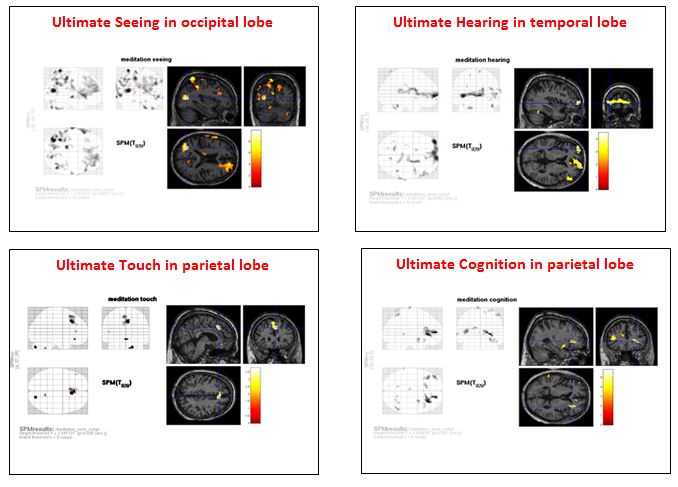
Validation #2: All four aspects of wordless awareness are activated when in meditation using bare attention technique
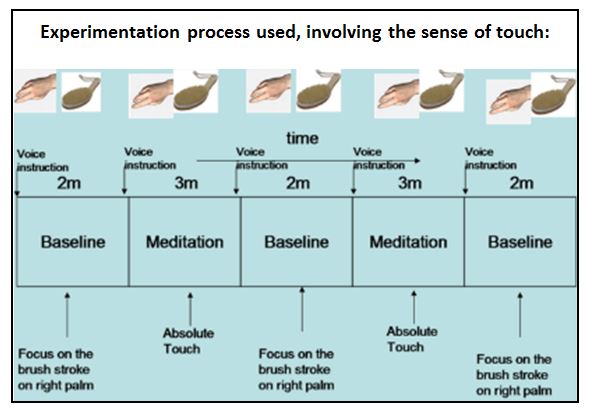
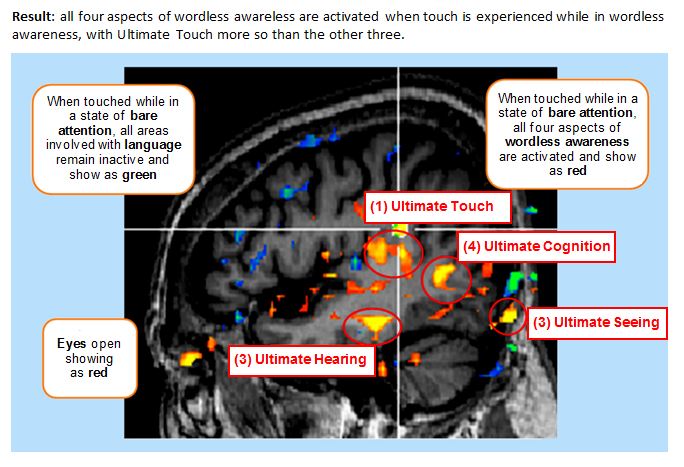
Validation #3: role of the precuneus during cognitive wordless self-awareness and its location
three relay stations of the brain (the reticular formation, the thalamus and the hypothalamus) to generate a state of complete stillness in all cortical and sub-cortical centers of the brain. This state of the brain is called the default mode network. The precuneus can be considered as the core of the brain. Its roles are:
- To direct all activities of the human being
- To help balance body and mind
- To develop the potential energy for enlightenment and creativity latent in each human being for the service of others
- To realize the meditation goals of ending suffering, attaining enlightenment and freedom from the cycle of births and deaths
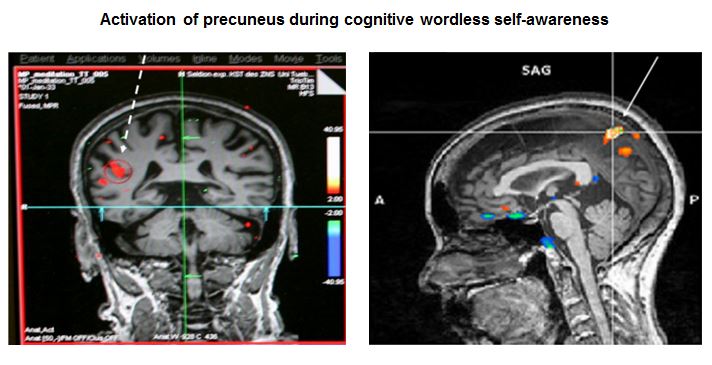
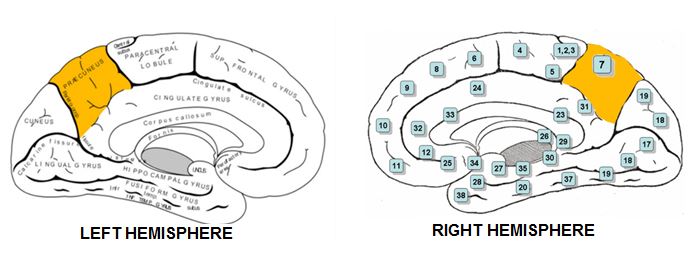
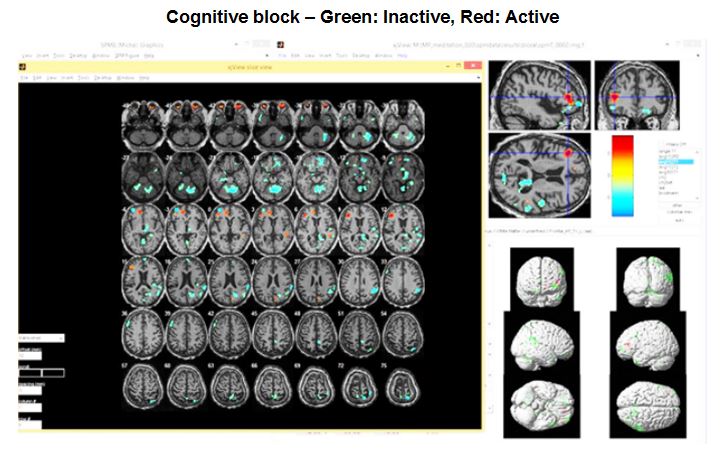
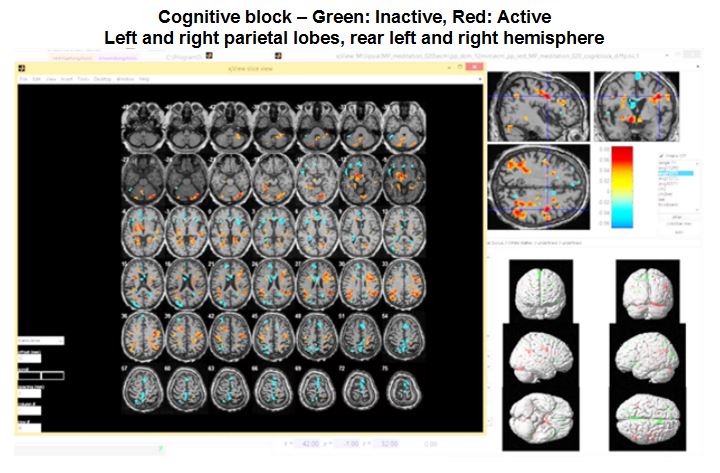
Validation #4: inactivation of language path areas during meditation
The language path consists of the following areas of the brain, located in the cortex:
- (1) Wernicke area: this is the encoding area, where concepts are encoded. It is located in the left temporal lobe, near Ultimate Hearing
- (2) Broca area: this is the decoding area, where concepts are decoded into language elements. It is located in the left side of the pre-frontal cortex
- (3) Speech area or Inner Talk area: this is where silent inner talk arises, corresponding to what Buddhism calls vitakka in Pāli (S: vitarka, V: tầm). It is located near the motor cortex in the frontal lobe.
- (4) Inner Dialogue area, corresponding to what Buddhism calls vicāra (in Pāli and Sanskrit, V: tứ). It is located in the frontal lobe, above the Inner Talk area.
Closely associated with language are the areas of the false mind:
- (5) The thinking mind (P: mano, S: manas, V: ý căn), located in the left pre-frontal cortex, where thinking, reasoning, remembering, judging, imagining, speculating, and worrying based on past experience and knowledge, are generated
- (6) The intellect (P & S: citta, V: trí năng), located near the thinking mind, where reasoning, speculating, deduction, and planning thoughts are generated.
These areas are inactive (green) in the state of deep meditation, indicating that samādhi is the state of wordless awareness. They are also inactive (green) when the practitioner maintains a state of wordless awareness when a sense organ (in this case the sense of touch) is stimulated. This meditation technique is called “just knowing” (V: chỉ biết).
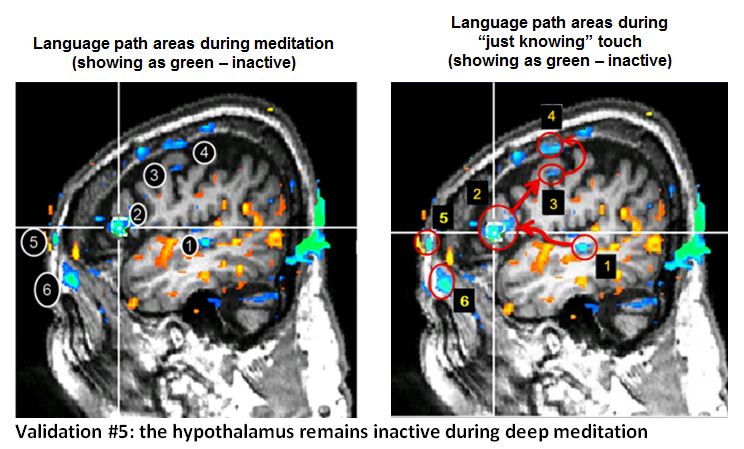
Validation #5: the hypothalamus remains inactive during deep meditation
The hypothalamus, which is part of the limbic system, helps express different states of our mind – such as tranquility, anger, sadness, sorrow, envy, loathing, greed etc. It also links the mind and the body through the autonomic nervous system and the endocrine system. During deep meditation, the inactive hypothalamus indicates that the mind and body are totally at rest.
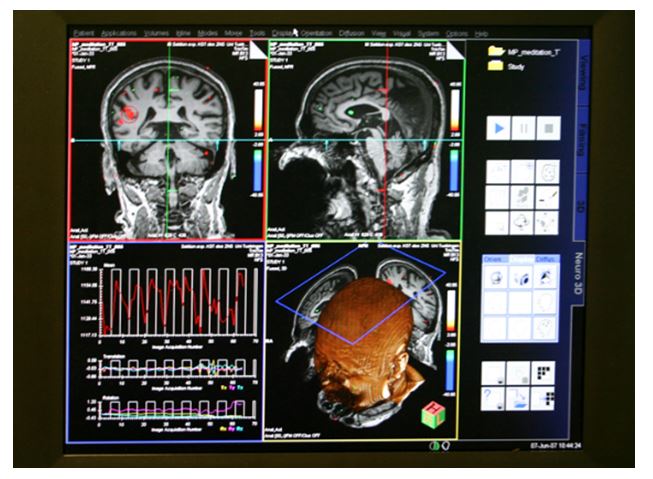
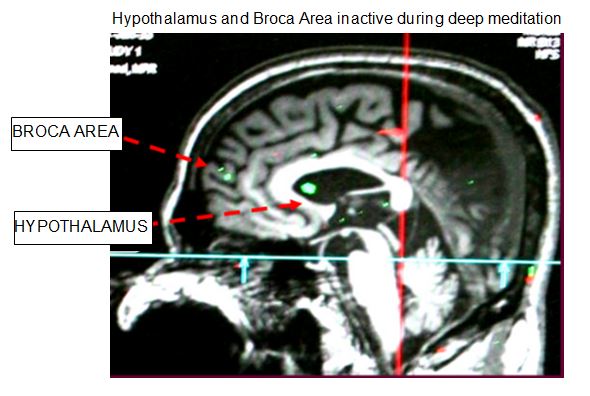
Validation #6: identification and location of elements of the false mind
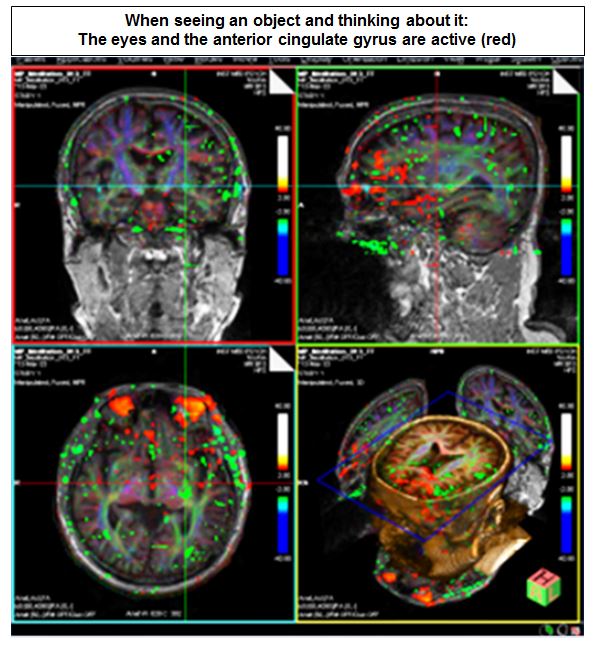
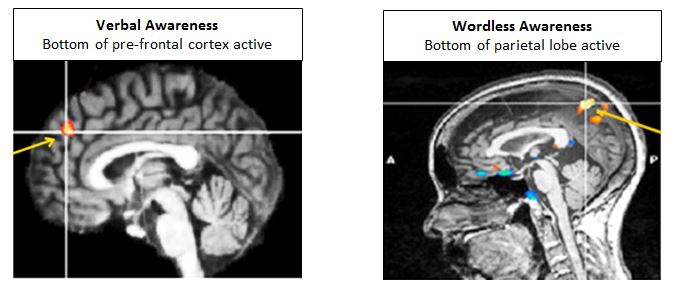
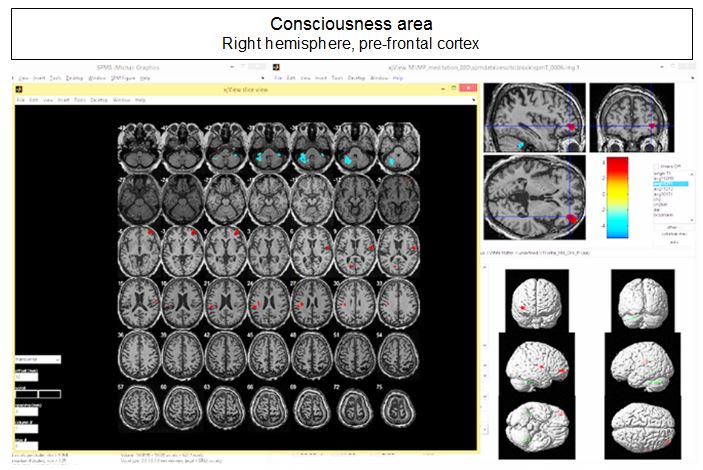
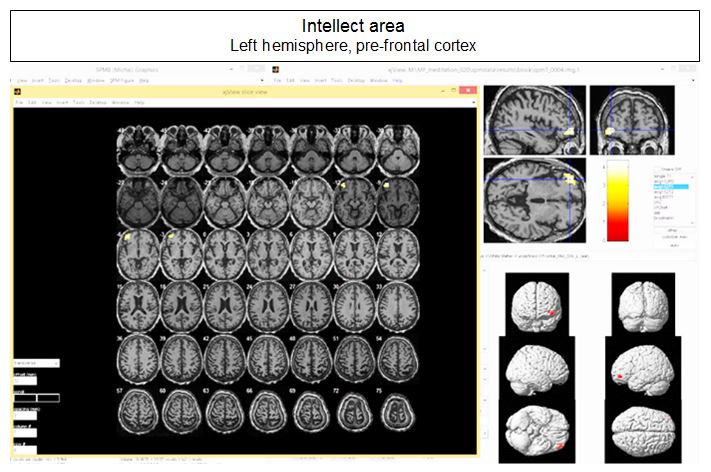
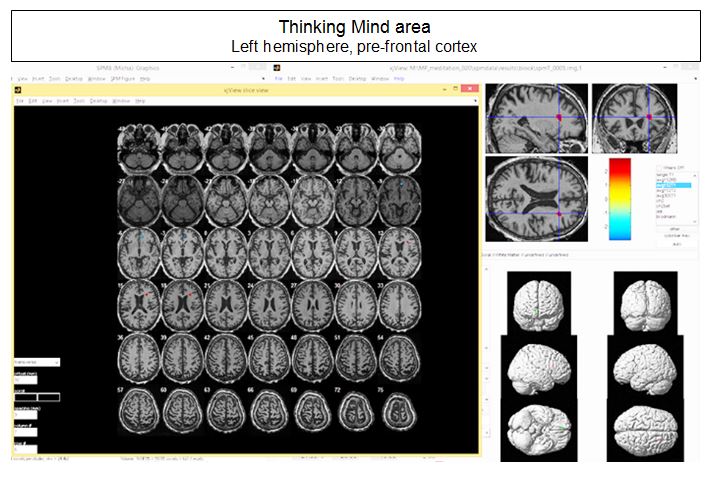
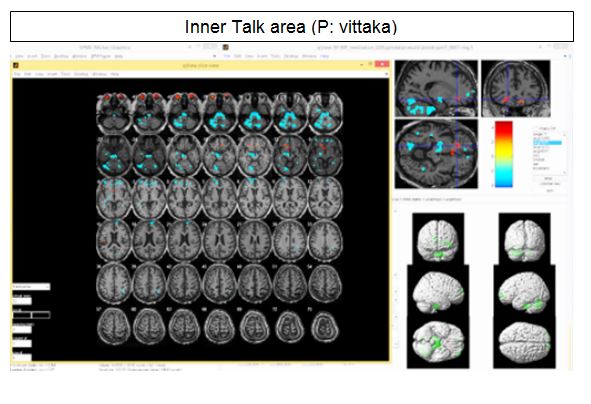
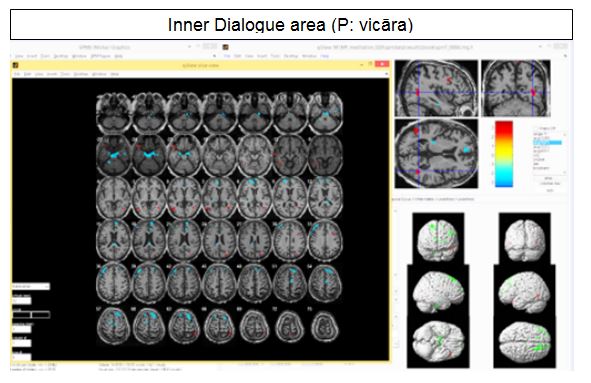
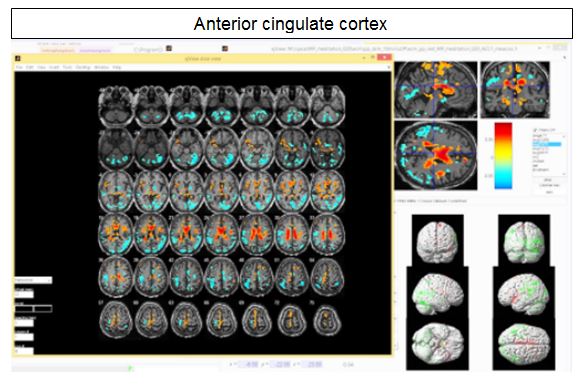
Validation #7: the four stages of samādhi experienced by the Buddha and their impact on the brain
The Buddha went through four stages of samādhi before attaining enlightenment. The four stages are:
- (1) samādhi with inner talk no inner dialogue – equivalent to verbal awareness
- (2) samādhi without inner talk or inner dialogue – equivalent to silent (or tacit) awareness
- (3) samādhi with full and clear awareness – equivalent to awakening awareness
- (4) immobility samādhi – equivalent to wordless cognitive awareness
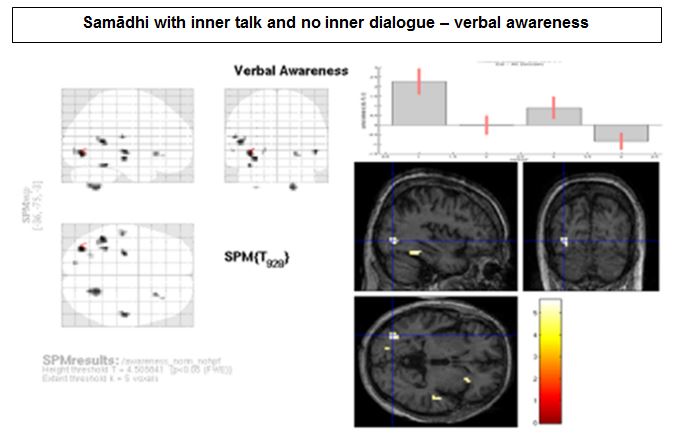
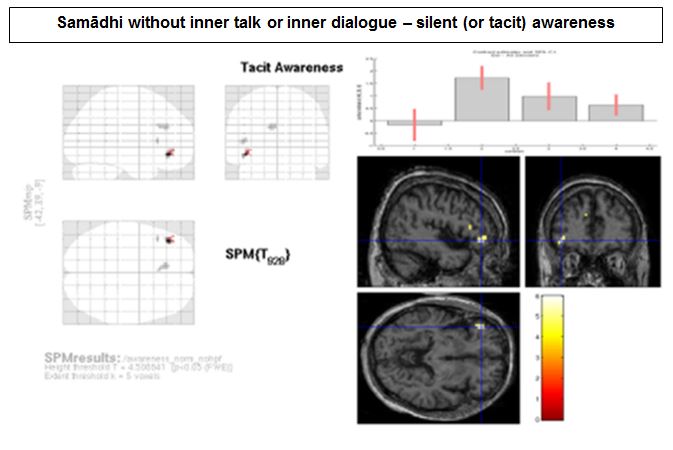
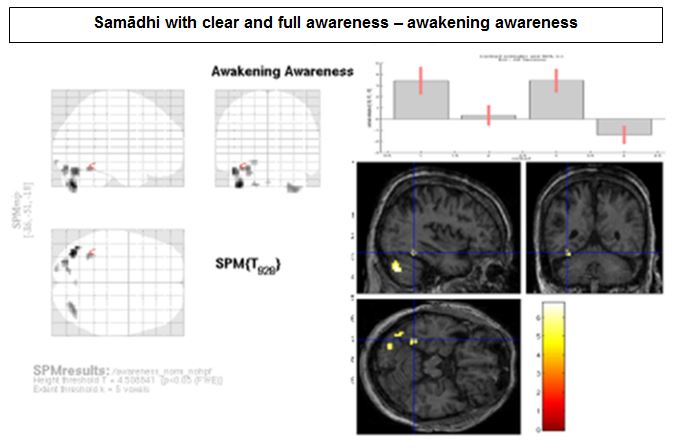
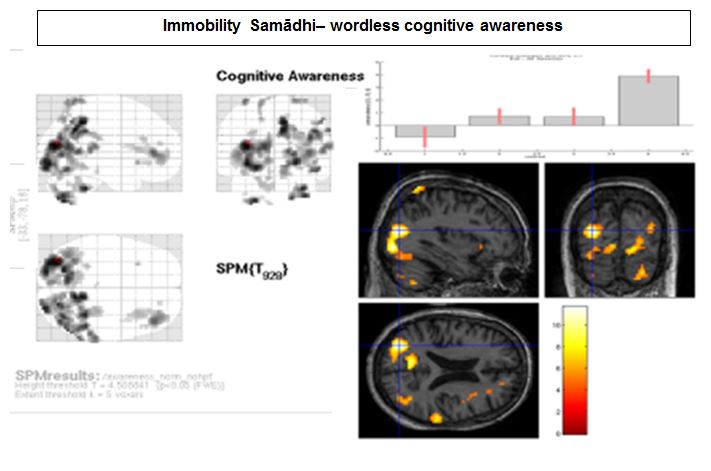
![]()


